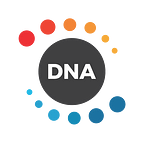Interoperability is Essential for dApps to Thrive
If there’s one major issue the blockchain space hasn’t been able to adequately solve since its inception, it’s interoperability.
Although this buzzword is heard frequently within blockchain technology circles, it’s hard to pin down exactly what interoperability is, and what it means for the industry in a practical sense. The traditional definition of interoperability is the ability of a piece of software to exchange and use information with other programs in a seamless fashion. However, this definition takes on some new meanings and nuances for the still nascent blockchain industry; which features over 1,600 individual projects running on multiple stand-alone protocols.
According to a 2018 report by Big Four consultancy firm Deloitte, the lack of interoperability and standard procedures between the multiple blockchain platforms in existence is a major challenge for the adoption and proliferation of blockchain technology and their applications. Likewise, Rand Research found that adopting an industry-wide standard for blockchain technology is the best chance at continued adoption.
Here, we’re going to take a look at what interoperability is in blockchain, and what effect it would have on the blockchain industry to have a fully interoperable solution.
What is interoperability?
In a blockchain setting, interoperability is the ability of individual blockchain protocols, and blockchain based applications, to communicate with each other and work together. At present, it’s impossible to send a transaction from one chain to another, for example from the Bitcoin network to Ethereum, without the use of some atomic swap capabilities or a similar third-party. Although third-party applications exist to fill this need, many of them are a convoluted way to transact cross-chain.
While interoperability may not be of paramount importance when purely exchanging value on-chain, such as purchasing something using cryptocurrency or sending crypto to another party; interoperability is highly important when it comes to building decentralized applications (dApps), smart contracts, and multi-chain solutions.
Take for example a real, tangible asset, such as a stock, represented as a security token on the Ethereum network. The issuing company may wish to also sell their stocks to members of the EOS community, and so it would be valuable to have a cross-compatible digital asset which could be issued or stored on both chains. This is interoperability in its simplest form. However, because each blockchain is built using different programming languages, technology, token standards, and consensus mechanisms, implementing interoperability in practice has proven incredibly difficult.
The result of this is that applications built on one chain cannot easily interact with another, and so despite their decentralization, we end up with similar silos of information and assets as in traditional systems. Therefore, to unlock the true power of blockchain technology, we need to crack the interoperability dilemma.
Why is interoperability important for dApps?
As we’ve briefly mentioned, the issue of interoperability is magnified as soon as operations become more complex than simply transacting value. For dApps, cross-chain compatibility will hugely increase the potential user base, diversify which digital assets can be used or traded within the app, or enable the deployment of entire cross-chain dApp ecosystems.
Because single blockchains are silos of both their own protocol level assets and the transaction history of that single blockchain, there is no way to effectively change which underlying assets are used within a dApp built on a single chain. Say, for instance, that a non-fungible crypto collectibles dApp was developed, to trade ERC-721 tokens. These collectibles would only be able to be bought and sold on the Ethereum network, as other chains wouldn’t recognize them. Instead, if this dApp was built on a secondary layer which was interoperable with multiple blockchains, those assets could be traded freely between protocols with no friction.
We can look at this problem a little like international remittance. Banks that only serve customers in one currency, and don’t allow international transfers or exchange payments made in different currencies, would severely limit their business. The same can be true for most blockchain projects — almost all protocols recognize the importance of building a truly interoperable solution for dApps and smart contracts, but it’s a difficult process.
Interoperability will drive dApp adoption
At Metaverse, we believe that interoperability will be one of the key drivers of dApp adoption and proliferation, allowing this nascent technology to thrive. That’s why we’re committed to building a standard for interoperability through our DNA chain solution.
Designed as a single standard reference point for developers, the DNA chain can be deployed across any other blockchain platform as desired. Many other projects have offered similar functionality in theory, but the DNA chain is among the first projects which would allow developers to build and deploy dApps on DNA, with their back-end infrastructure functioning cross-platform, and therefore becoming truly interoperable.
This is a serious first step in driving the standardization which is so needed in the blockchain space. As Deloitte found, interoperability is one of the major factors holding back the widespread proliferation of dApps, and with our solution, we are hopeful that dApps will begin to attract far more average daily users. At this point in time, interoperability may be the single most important factor for the future of dApp adoption — and it’s time it was solved.
